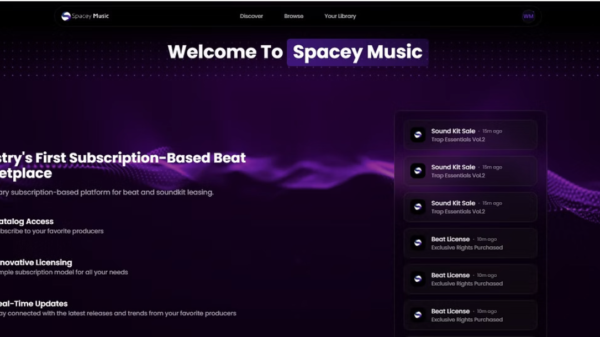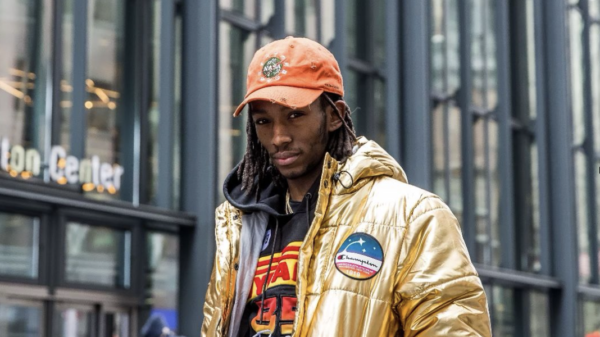For touring professionals in the live music industry, healthcare has long been an elusive benefit. While local stagehands working in venues across the country have enjoyed employer-provided health insurance for decades through International Alliance of Theatrical Stage Employees (IATSE) contracts, their counterparts on the road — the audio engineers, lighting technicians, production coordinators, and other crew members who travel with touring shows — have been left to navigate the healthcare system on their own.
Now, IATSE is working to change that through an ambitious grassroots campaign to extend its National Benefit Fund to touring professionals, offering them access to the same healthcare and retirement benefits enjoyed by their venue-based colleagues.
Related
The disparity — what some stagehands call the tale of two crews — becomes starkly apparent when touring and local union members work side by side in the same venue.
“I’ll be in an arena for 20 plus hours working side by side with someone from the local IATSE, and we’re in the same situation, the same long hours, possibly a dangerous environment, yet they are covered,” says Ally Vatter, a production coordinator who has been touring for 21 years, currently with Nine Inch Nails. “They are insured. I pay out of pocket, but if I can’t afford that, then I won’t be insured.”
The consequences of this gap can be severe. In 2009, before the Affordable Care Act eliminated pre-existing condition exclusions, Vatter’s appendix burst while on tour. As an uninsurable 27-year-old, she was left with a $50,000 hospital bill and discharged from the hospital just a day and a half after surgery because she had no insurance. The artist she was working for organized an early crowdfunding effort that eventually paid off the debt, but the experience highlighted a systemic problem.
“We work so hard, and we work for millionaires, and we’re over here begging each other for help,” Vatter says, noting that crowdfunding campaigns for touring crew members facing medical crises remain common today.
Related
Nathan Honor, a sound engineer and member of IATSE Local 4 in Brooklyn and Local 100 on the East Coast, recalls his own pre-union touring days: “I broke my foot at one point and had to do an entire tour with a limp, with a bad foot, and never really dealt with it, and it had lasting repercussions.”
The irony, as Joseph Juntunen points out, is that a solution already exists. Juntunen, a special representative for IATSE who spent years touring with acts like Black 47 and Graham Parker before helping organize unions at Webster Hall and Brooklyn Steel, explains that the National Benefit Fund has been providing healthcare and retirement benefits to IATSE members across various entertainment sectors for decades.
“When an employer makes a contribution to that fund, that money belongs to the recipient. It belongs to the person that earns that money through their labor, and it goes with them wherever they go,” Juntunen says.
The fund currently serves the vast majority of IATSE’s more than 180,000 members who work in TV, film, Broadway, trade shows and venues. The touring initiative, which would extend access to an estimated 33,000 professionals working in the touring industry globally, is designed around the realities of touring work, which involves professionals potentially working for multiple employers throughout the year.
Related
Here’s how it would function: When an artist or management company agrees to participate, they make contributions to the National Benefit Fund on behalf of their touring crew members. These contributions then go into individual “cap accounts” that belong to the workers and accumulate across different tours and employers.
“If you do one tour for two months at the beginning of the year, that money goes into your cap account. If you do another tour three months later on the same plan, that money would go into that cap account,” Honor explains. “Every quarter, there is a qualifying period where you choose your level of coverage, and then money is deducted from that cap account to buy your health insurance.”
Critically, the money stays in the worker’s account even during gaps between tours. “Even if no employer makes a contribution for two years, that money stays in your cap account, and you can use it to buy health insurance,” Honor says.
The system offers flexible tiered coverage options, ranging from catastrophic coverage for younger, healthier workers to premium “Cadillac” plans for those with families or greater healthcare needs. Workers can also pay out of pocket to upgrade their coverage if their cap account contributions aren’t sufficient for their desired plan level.
Related
Healthcare is provided through Anthem Blue Cross Blue Shield, and the plan’s large membership base allows for competitive rates that individual touring professionals could never achieve on their own.
Unlike traditional union initiatives, the health plan is entirely voluntary — no employer or worker is mandated to participate. Instead, IATSE is building support through a grassroots campaign, encouraging touring professionals to have conversations with their employers about joining the program.
“The touring industry is very big and broad, but it’s also small in the way that there’s a big word-of-mouth system that happens,” Vatter says. “Word travels quickly.”
The campaign is targeting artists, managers and tour managers — the key decision makers who control touring budgets. A town hall for interested parties is planned, and committee members have been working to spread awareness across the industry.
“We’re not looking to start fights with the employers. We’re not looking to have adversarial relationships,” Juntunen emphasizes. “We’re looking to work together to build a more sustainable, healthy touring industry.”
Related
The ultimate vision is for healthcare contributions to become a standard line item in touring budgets, much like they already are for venue work. If major promoters like Live Nation or AEG were to adopt the program across their tours, it could rapidly become an industry standard.
“We think this is really an opportunity for artists and management to put their money where their mouth is and help the people who are making the show,” Honor says.
According to Juntunen, the response so far has been encouraging. “The conversation is expanding rapidly, and we are in active discussions with several teams right now for next year’s touring cycle,” he says.
For touring professionals who have spent their careers without the basic security that their venue-based counterparts take for granted, the initiative represents more than just healthcare — it’s recognition of their essential role in the industry.
“This is the first time that someone extended an olive branch to the touring industry and said, ‘Hey, we see you. We understand we’re working right there with you, and we really want to make sure that you guys are safe and covered and taking care of yourselves as well,’” Vatter says. “Because in the end, we have the same goal, right? It’s to get that show up and make it work.”
As Honor notes, touring is “a very high impact business” where veteran crew members often reach their 40s, 50s, and 60s with health problems they can’t afford to treat and no retirement savings. “Not a day goes by at work that you don’t meet somebody who’s been touring for 20, 30, 40 years, and they don’t have anything saved,” he says.


































